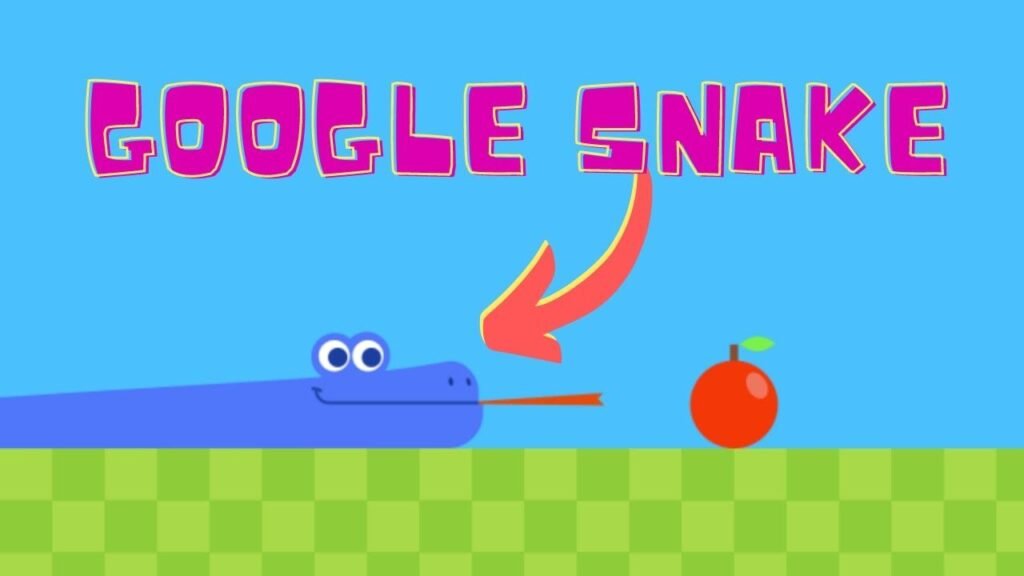Google Snake is more than just a simple game; it’s a cultural phenomenon that has captured the hearts of millions worldwide. This digital rendition of the classic Snake game, which first emerged in the late 1970s and gained massive popularity on Nokia phones in the 1990s, has been reimagined and reintroduced to a new generation through Google’s accessible platform. This article delves into the evolution, mechanics, and lasting impact of Google Snake, exploring its significance in the digital era.
The Genesis of Google Snake
The original Snake game is a testament to the ingenuity of early video game developers. Tasked with creating engaging content within the severe limitations of hardware at the time, developers birthed a concept that was both simple and infinitely playable. The player controls a line that grows in length, with the game’s objective being to avoid colliding with the screen’s borders, obstacles, and the snake’s own ever-extending body while consuming items to gain points.
Google Snake, while paying homage to this classic, brings its own flavor to the table. Integrated into Google’s suite of Easter eggs and free-to-play games, it offers a modern twist on the classic, incorporating updated graphics, additional features, and customizable settings that enhance the user experience without detracting from the game’s nostalgic charm.
Mechanics and Gameplay
At its core, Google Snake maintains the straightforward mechanics of the original game. The player navigates a snake around the screen, consuming food to grow in length. Each piece of food eaten increases the snake’s size, thereby increasing the game’s difficulty as maneuvering space decreases. The game ends when the snake either runs into the screen’s edge or into itself.
However, Google’s version introduces new elements that broaden the gameplay experience. Players can choose from various modes that alter game objectives, such as “Peaceful Mode,” which removes the walls as obstacles, and “Classic Mode,” which mimics the original game’s mechanics. Additionally, Google Snake includes a range of selectable skins and themes, allowing players to customize the visual aspects of the game, making each playthrough unique.
Cultural Impact and Legacy
The significance of Google Snake extends beyond its gameplay. In an era dominated by high-budget, graphically complex games, the simplicity of Google Snake is a breath of fresh air. It serves as a reminder of the video game industry’s roots, illustrating that gameplay innovation and engaging mechanics are as important as, if not more so than, cutting-edge graphics.
Moreover, Google Snake has become a tool for nostalgia, connecting generations of gamers. Parents who grew up playing the original Snake on their Nokia phones can share this piece of their childhood with their children through Google’s platform, bridging the gap between generations and fostering shared experiences.
The game’s accessibility also plays a critical role in its impact. Available for free, with no need for downloads or high-end hardware, Google Snake is accessible to anyone with internet access. This democratization of gaming allows people from all walks of life to enjoy the game, making it a universal source of entertainment and joy.
Educational Value
Interestingly, Google Snake has found a place in educational settings as well. Teachers have incorporated it into lessons about programming, logic, and problem-solving. The game’s simple mechanics make it an excellent tool for introducing students to basic coding concepts, such as loops and conditionals, in a fun and engaging way.
Additionally, the game can teach important life skills such as strategic planning and decision-making. Players must think ahead, considering the implications of each move on future possibilities, mirroring the type of critical thinking required in many real-life scenarios.
Conclusion
Google Snake is more than just a game; it’s a cultural artifact that represents the evolution of digital entertainment. Its simplicity, coupled with the depth of strategy and customization it offers, makes it a standout example of how classic games can be revitalized for new audiences. As it bridges generational gaps and finds utility in educational contexts, Google Snake exemplifies the enduring power of well-designed games to connect, teach, and entertain.
In a world where video games are often judged by their graphical fidelity and complexity, Google Snake serves as a reminder of the core principles that make games truly engaging: simplicity, challenge, and the joy of play. As we move forward in the digital age, the legacy of Google Snake will undoubtedly continue to influence the development of games, reminding developers and players alike that sometimes, the simplest concepts can lead to the most enduring and beloved experiences.
FAQs about Google Snake
1. What is Google Snake?
Google Snake is a modern version of the classic Snake game, reimagined and made accessible through Google’s platform. It involves navigating a snake around the screen to consume items, which causes the snake to grow in length. The game becomes more challenging as the snake grows and the space to manoeuvre decreases.
2. How can I access Google Snake?
You can access Google Snake by searching for “Google Snake” in the Google search engine or by directly visiting the game’s dedicated page on Google’s site. It’s available for free and can be played on most web browsers without the need for any downloads.
3. Are there different modes in Google Snake?
Yes, Google Snake offers several modes that vary the gameplay, including “Classic Mode,” which mimics the original Snake game, and “Peaceful Mode,” which removes the walls as obstacles. There are also other variations that introduce new challenges and objectives.

